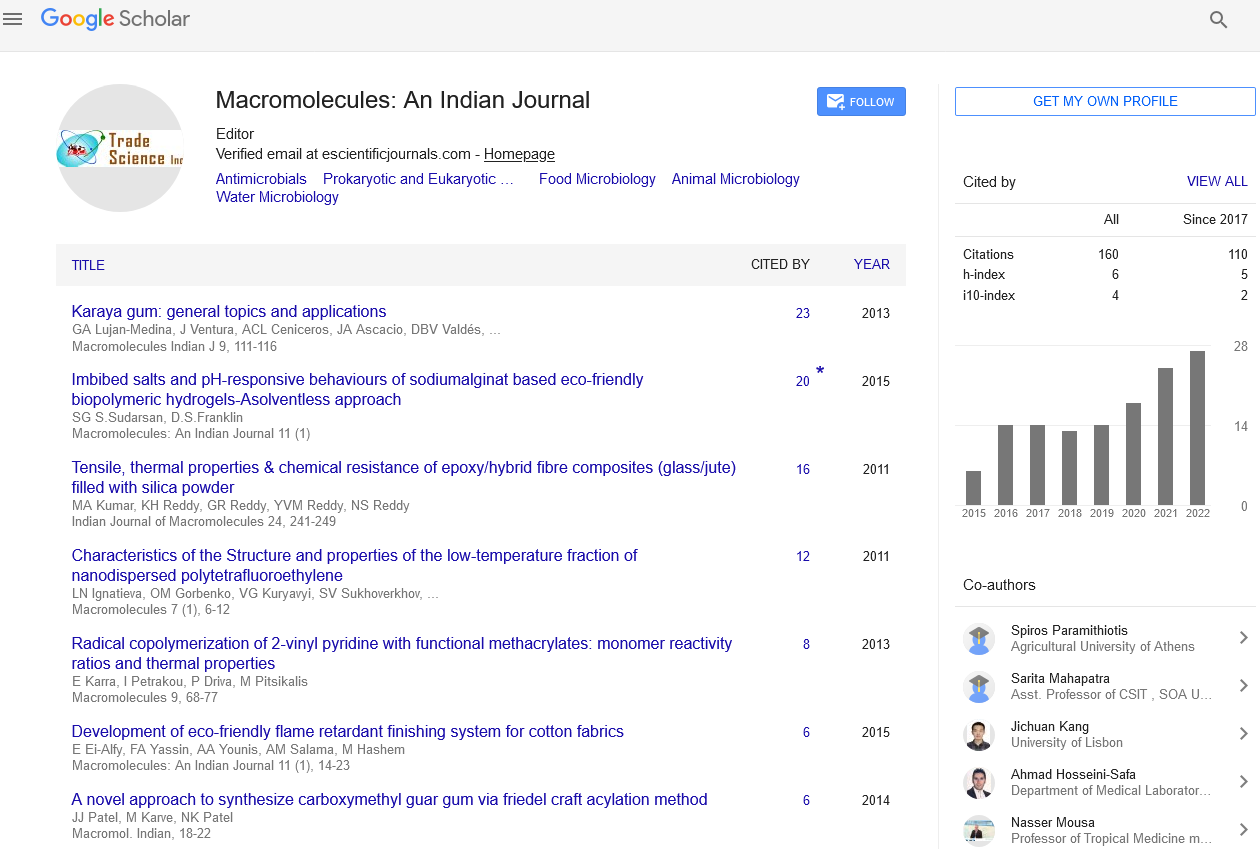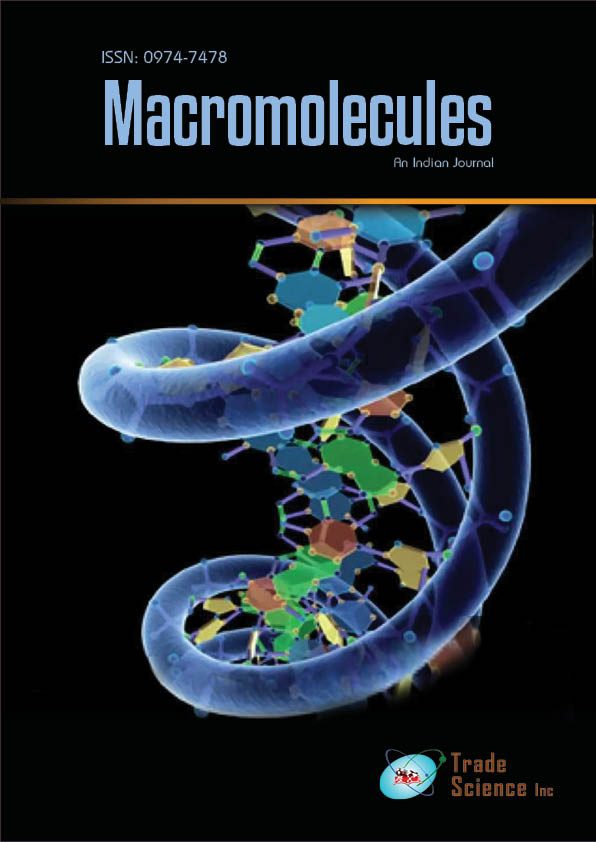Abstract
Design and Synthesis of APolymeric Prodrug by Solid Phase Modifications of Microspheres Prepared Via Precipitation Polymerization
Author(s): Francesco Puoci, Francesca Iemma, Umile Gianfranco Spizzirri, Giuseppe Cirillo, Mariarosaria Castiglione, Nevio PicciRecently, polymer conjugation with biologically active components was proposed to overcome pharmaceutical and pharmacokinetic barriers such as low oral absorption, lack of site specificity, chemical instability, toxicity and poor patient acceptance. This report describes the synthesis of new insoluble polymeric material as potential carrier for biomolecules. We prepared no-swellable microparticles to covalently link drug molecules by means of spacer containing functional groups able to undergo enzymatic or chemical degradation in a specific biological compartment. The microparticles were realized by precipitation polymerization of glycidyl methacrylate and divinylbenzene using 2,2Â’-azobis(isobutyronitrile) as initiator. Thus, the obtained beads have epoxy groups on surface which are susceptible of nucleophilic reactions. The microparticles were characterized by FT-IR spectrophotometer, scanning electron microscopy and dimensional analysis. One of the potential applications of synthesized microparticles is a colon specific release of 5-Amino Salicylic Acid(5- ASA) linked to polymer carrier by azo-bridge. The oxirane opening with 4-nitroaniline allows to introduce nitro groups on the particles surface. Reduction of nitro groups and subsequent copulation reaction of corrispodent diazonium chloride salt with salycilic acid carried out to conjugate. All reaction steps are based on solid phase transformations involving functional groups on the microspheres surface. This synthetic strategy produces solid intermediate easy to purify.

